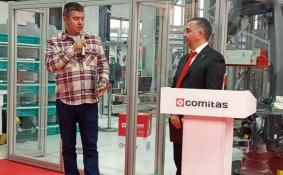Scientific & Practical Journal

Editorial News
Dear readers! We are pleased to present to you the eleventh issue of the journal in 2025. There are a lot of relevant and useful materials in the issue, which, hopefully, will not be ignored.
Dear readers! In September the CeMAT RUSSIA exhibition was held, which showed everyone that innovations and robotics are increasingly penetrating the logistics industry. We can safely say that many technologies are tested here, and only then they go out into the world. However, it is not only CeMAT RUSSIA that demonstrates the prevalence of the digital agenda.
Dear readers! This is the ninth issue of the journal, which turned out to be very rich and diverse. Traditionally, the issue is opened by an analyst. The material by Alina Nasyrova from the Market Guide Agency, dedicated to investments in warehouse complexes in Russia, recalls the importance of developing logistics infrastructure for the integrated development of regions.
PHOTO OF THE WEEK
CITATIONS
All News of Logistics
Russian Export Center Group to Support Not Only Exports, But Also Imports
On March 23, the State Duma, in the second and third readings, adopted a bill to expand the responsibilities of the Russian Export Center Group (REC, EXIAR, and EXIMBANK OF RUSSIA).
In the context of important changes in the foreign trade situation and significant disruption of the existing foreign trade relations, Russian exporting manufacturers are facing challenges to reconfigure their production chains and replace suppliers of equipment and components from vendors who refused to fulfill their contractual obligations or became unreliable partners under the imposed sanction restrictions. In this environment, apart from supporting Russian exporters, the responsibilities of the REC Group (part of VEB.RF) will also include the above issues.
To address these challenges, it is planned to provide financial, insurance, guarantee, and other support to Russian companies as part of competencies that have been built and developed in the Group over the past years.
The Russian Export Center Group has a wide range of well-established mechanisms for supporting exporting companies, which have proven to be effective in recent years. The REC Group is working on setting up support mechanisms, so that Russian manufacturers of competitive and sought-after products could use comprehensive support tools in difficult times along the entire chain of creation and sale of goods, including imports of the necessary equipment, components, and parts, which they now purchase from third countries.












